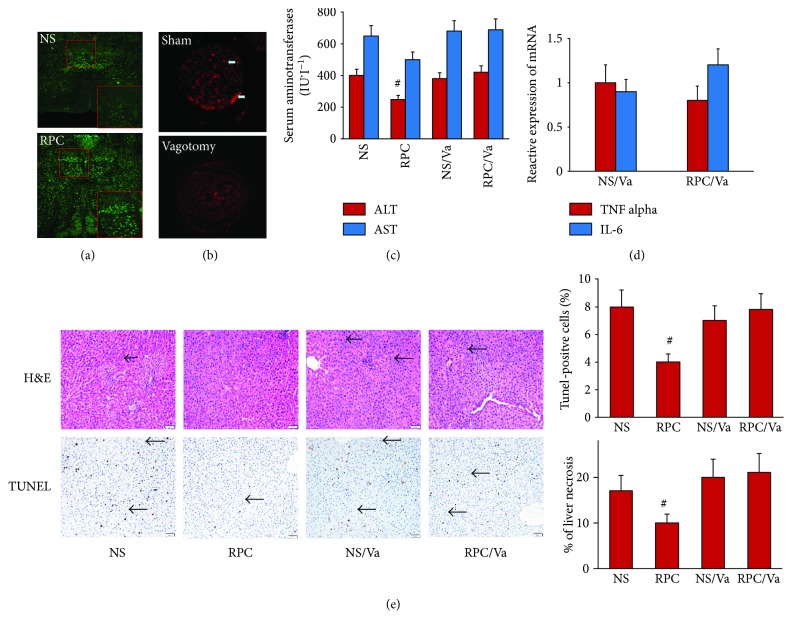Figure 3.
Hepatic protective effect of opiate agonist disappeared after vagotomy. Rats were divided into 4 groups with or without vagotomy and then treated with an intravenous injection of remifentanil (2 μg·kg−1·min−1) or normal saline (NS) within 15 minutes. Hepatic IR was induced 10 minutes after the treatment above with ischemia for 45 minutes and 120-minute reperfusion. n = 8 in each group. (a) Activation of neuron was manifested by c-Fos immunofluorescence. Red frame regions revealed that remifentanil preconditioning (RPC) activated DMV compared with the NS group. (b) Fluorescent Dil tracer indicated that the communication of the vagus nerve between the liver and the inferior ganglion of the vagus nerve in the vagotomized group was almost interdicted, so that the operation of vatogomy was reliable. (c) Serum alanine aminotransferase (ALT) was significantly lower in the RPC group than in the NS group and vagotomy groups. (#P < 0.05 versus NS, NS/Va, and RPC/Va groups). (d) There was no statistical significance in relative mRNA expression of TNF-α and IL-6 from quantitative real-time PCR between the NS/Va and RPC/Va groups. (e) Photograph depicts a typical pattern of focal necrosis after ischemic insult. Black arrows indicate ischemic changes that were seen less seriously in the remifentanil preconditioning (RPC) group compared with the other groups. The degree of apoptosis and the number of terminal deoxynucleotide transferase-mediated deoxyuridine triphosphate nick-end labeling- (TUNEL-) positive cells (black arrows) were also decreased in the remifentanil preconditioning (RPC) group (magnification: 200x; #P < 0.05 versus NS, NS/Va, and RPC/Va groups).

